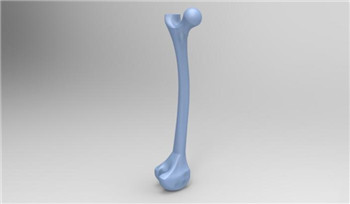(单词翻译:单击)

Analysis of an ancient thigh bone suggests that a species of early hominin may have survived as late as 14,000 years ago in southwest China.
对一根古代股骨的分析表明,有一个早期人亚族物种可能在中国西南地区存活到了近至1.4万年前。
The bone was discovered in 1989 along with other human remains at a site known as Maludong, or Red Deer Cave. Scientists have not yet ascribed the bone to a particular species.
这根股骨和其他一些人类遗骸是1989年在一个被称为“马鹿洞”的地方发现的。科学家们一直没有把这根股骨归为一个特定物种。
But in a study in the journal PLOS One, Darren Curnoe, a paleontologist at the University of New South Wales Australia, and his colleagues report that the thigh bone strongly resembles those of Homo erectus or Homo habilis, which lived around 1.5 million years ago or more in Africa.
但在《科学公共图书馆-综合》(PLOS One)发表的一项研究中,澳大利亚新南威尔士大学(University of New South Wales Australia)古生物学家达伦·克诺伊(Darren Curnoe)及同事表示,这根股骨和直立人或能人的股骨非常类似,而他们大约150万年前或更早的时候生活在非洲。
The finding suggests that early hominins may not have immediately disappeared in China after the appearance of modern humans.
这一发现表明,现代人出现后,早期人亚族物种可能并没有在中国立即消失。
“It seems likely now that there was extensive overlap in time between archaic and modern humans for tens of thousands of years,” Dr. Curnoe said.
“很可能在大约数万年时间里,古人类和现代人一直共存,”克诺伊说。
In 2012, he and his colleagues studied teeth and cranial and jaw bones from Maludong. Radiocarbon dating revealed the remains to be about 14,000 years old as well.
2012年,他和同事研究了马鹿洞人的牙齿、颅骨和颌骨。放射性碳测年显示,这些遗骸距今有大约1.4万年历史。
Next, the researchers would like to extract DNA from bones found in the cave. But because the thigh bone shows signs of having been burned, ancient human DNA may not have survived.
接下来,研究人员想要从马鹿洞里发现的骨骼中提取DNA。但鉴于这根股骨上有被烧灼的痕迹,古人类DNA可能没能保留下来。


